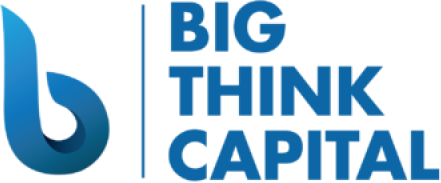Understanding the Impacts of the Fed’s Recent Interest-Rate Changes: A Deep Dive into Strategies for Securing and Managing Working Capital for Your Small Business
Estimated reading time: 5 minutes
- Stay informed about interest rate trends and their implications on your financing strategies.
- Leverage digital tools for cash flow management to adapt quickly to changing circumstances.
- Build financial resilience by maintaining an emergency fund and diversifying your supply chain.
Table of Contents
- The Federal Reserve’s Interest Rate Adjustments and Their Impacts
- How Will the Fed’s Rate Decision Impact My Business’s Ability to Obtain Funding?
- Strategies for Leveraging Interest Rate Changes
- The Role of Digital Cash Flow Management Tools
- Managing Funds Efficiently in a Changing Financial Landscape
- Preparing for Future Inflation Trends
- Practical Takeaways
- Conclusion
The Federal Reserve’s Interest Rate Adjustments and Their Impacts
The Federal Reserve (Fed) raises or lowers interest rates to influence economic activity. As of 2025, the Fed has undertaken a series of rate hikes that impact various sectors, including small businesses.
Why Interest Rates Matter for Small Business Financing
When the Fed increases interest rates, the cost of borrowing typically rises. This can affect the following aspects of small business funding:
- Loan Eligibility: Higher rates may deter potential borrowers, complicating loan eligibility for those with marginal credit histories.
- Cost of Capital: Increased rates mean more expensive borrowing, which can limit the amount of capital a business can secure for expansion or operational needs.
- Investment Decisions: Higher financing costs could influence business owners to rethink expansion plans and delay investments in infrastructure or workforce.
As a business owner, staying informed about these adjustments is crucial in navigating your financing strategy.
How Will the Fed’s Rate Decision Impact My Business’s Ability to Obtain Funding?
With interest rates fluctuating, you may wonder how this environment will affect your access to funding. Here are a few key ways to evaluate:
- Working Capital Advances: Funding through merchant cash advances (MCA) might become more appealing for businesses looking for quick access to capital. However, it is essential to weigh the overall costs, as MCAs can have substantially higher fees compared to traditional loans.
- SBA Loan Viability: Small Business Administration (SBA) loans often have competitive rates and terms that can remain favorable even against rising rates. Many lenders also offer fixed interest rates on SBA loans, which can provide stability amid volatility.
- Line of Credit Adjustments: A business line of credit can offer flexibility, allowing you to borrow as needed. Keep in mind that with rising interest rates, banks may tighten their lending criteria, impacting your ability to access funds.
Strategies for Leveraging Interest Rate Changes
- Lock in Current Rates: If you are considering an SBA loan or other fixed-rate loan, acting quickly may allow you to secure current rates before further increases.
- Consider Alternative Financing Options: Explore working capital advances or invoice financing as a way to receive immediate funds without necessarily relying on traditional bank loans. These alternatives can be less sensitive to rising rates, allowing your cash flow to remain intact.
- Utilize a Financial Advisor: Hiring a financial expert or consultant can provide valuable insights into the evolving lending landscape, enabling you to make informed decisions about your financing options.
The Role of Digital Cash Flow Management Tools
In today’s digital age, the availability of cash flow management tools allows small business owners to have real-time insights into their financial health. These tools can help businesses adapt to changing economic conditions effectively.
- Budgeting Software: Using digital budgeting tools can assist in setting and maintaining a clear budget aligned with the increased costs associated with rising interest rates.
- Cash Flow Analysis Tools: Access to tools that provide cash flow forecasts will enable you to understand potential impacts on your operations and make proactive adjustments as needed.
- Automated Invoicing: Implementing invoice automation can speed up cash inflow, ensuring you have sufficient working capital on hand even as borrowing costs rise.
Managing Funds Efficiently in a Changing Financial Landscape
Efficiently managing the funds available to your business is essential in the current financial climate. Here are several tactics to consider:
- Build an Emergency Fund: Set aside capital reserves to cushion against inflation and unexpected expenses. Maintaining a healthy reserve can better position your business to respond to financial pressures.
- Negotiate Terms with Suppliers: In light of potential price rises or tariff increases, approach suppliers to negotiate extended payment terms. This strategy allows you to manage cash flow more effectively while maintaining relationships.
- Embrace Financial Technology: Leveraging fintech tools can streamline financial processes, giving business owners valuable time to focus on strategy instead of logistics.
Preparing for Future Inflation Trends
Inflation appears to be an ongoing concern, prompting small businesses to take preventative measures. Here are some recommendations to help cushion your business against price rises or tariffs:
- Diversify Your Supply Chain: Look into alternative suppliers that might offer more competitive pricing. This reduces reliance on single sources vulnerable to price volatility.
- Price Adjustments: Consider revisiting your pricing strategy. Adjusting your prices incrementally can help offset increased costs without alienating customers.
- Invest in Efficiency: Focus on improving operational efficiencies. Streamlining processes can reduce costs and improve margins, helping to mitigate the effects of inflation.
Practical Takeaways
To sum up, navigating the impacts of the Fed’s recent interest-rate changes requires proactive strategies. Here are three key takeaways for small business owners:
- Stay informed about interest rate trends and their implications on your financing strategies.
- Leverage digital tools for cash flow management to adapt quickly to changing circumstances.
- Build financial resilience by maintaining an emergency fund and diversifying your supply chain.
Conclusion
As the Fed continues to adjust interest rates in response to economic pressures, small business owners must be well-prepared to adapt their financing strategies. Understanding these changes can aid in securing better working capital and managing your financial resources effectively. If you are considering financing options or need assistance navigating this changing landscape, Big Think Capital is here to help. Our team of funding experts can guide you in selecting the right financial product for your needs.
Learn more at bigthinkcapital.com or speak with a funding expert today to ensure your business harnesses the best financial opportunities in 2025.
FAQ
- What are the current interest rates set by the Fed?
- How can small businesses prepare for rising interest rates?
- What financing options are available for small businesses?
- How can digital cash flow management tools help my business?
- What steps can I take to manage my budget effectively during inflation?






